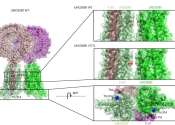Researchers develop an alternative to pacemakers in the form of a hydrogel
A heart attack is a life-threatening condition, with patients remaining at risk of premature death long after the actual attack—50% to 60% of patients die subsequently as a result of sudden cardiac death, triggered by cardiac ...
Jun 28, 2024
0
10









